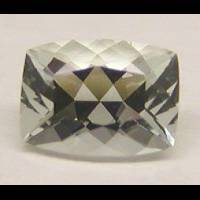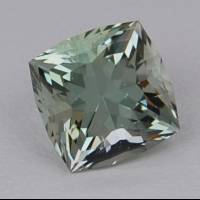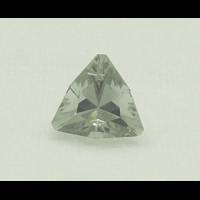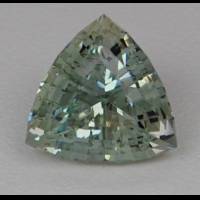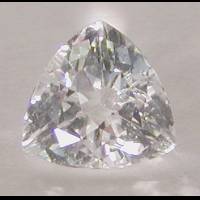Oligoclase

Kenya
2.57 carats
© Rarestone.com
The name oligoclase derived from the Greek "oligos" - little, and "clasein" - to break, because the mineral was thought to have a less perfect cleavage than albite. This name was given by August Breithaupt in 1826.
Oligoclase Gemstones by Colour
This table shows the variety of hues this gemstone can be found in. Click on a photo for more information.
Oligoclase Gemstones by Size
This table shows distribution of Oligoclase gemstone sizes that are listed on this site. This can give a good indication as to the general availability of this gemstone in different sizes.
Contributed photos
Lightest:0.74 cts
Heaviest:8.95 cts
Average:2.90 cts
Total photos:21
Do you have a larger Oligoclase? Why not upload a photo?
| General Information | ||||||||||
|---|---|---|---|---|---|---|---|---|---|---|
| A variety or type of: | Feldspar | |||||||||
| Chemical Formula |
| |||||||||
| Oligoclase Treatments | ||||||||||
| Irradiation may turn colourless material blue if lead and water impurities are present (see amazonite). Oligoclase has also been reported to turn orange and green upon irradiation. | ||||||||||
| Physical Properties of Oligoclase | ||||||||||
| Mohs Hardness | 6 to 6.5, Gemmological Tables (2004) More from other references | |||||||||
| Specific Gravity | 2.62 to 2.67, Gemstones of the world (2001) More from other references | |||||||||
| Cleavage Quality | Perfect,Good, Gems, Sixth Edition (2006) Perfect in one and good in another direction | |||||||||
| Fracture | Conchoidal, Gems, Sixth Edition (2006) | |||||||||
| Optical Properties of Oligoclase | ||||||||||
| Refractive Index | 1.538 to 1.550, Gemmological Tables (2004) More from other references | |||||||||
| Optical Character | Biaxial/-, Gemmological Tables (2004) More from other references | |||||||||
| Birefringence | 0.010, Gemmological Tables (2004) More from other references | |||||||||
| Dispersion | Weak, Gems, Sixth Edition (2006) | |||||||||
| Colour | ||||||||||
| Colour (General) | Colourless to bluish, Gemstones of the world (2001) More from other references | |||||||||
| Causes of Colour | Blue (moonstone), Rayleight scattering of light by lamellar structure. Red (sunstone), red lepidocrocite or hematite platelets give the aventurescence, Pragmatic Spectroscopy For Gemologists (2011) | |||||||||
| Transparency | Transparent, Gemmological Tables (2004) | |||||||||
| Lustre | Vitreous,Pearly, Gemstones of the world (2001) On cleavage surfaces mother-of-pearl lustreMore from other references | |||||||||
| Fluorescence & other light emissions | ||||||||||
| Fluorescence (Long-Wave UV) | Pale brownish white, pale brown, Gems, Sixth Edition (2006) | |||||||||
| Crystallography of Oligoclase | ||||||||||
| Crystal System | Triclinic, Gemstones of the world (2001) More from other references | |||||||||
| Geological Environment | ||||||||||
| Where found: | As a major part of many rocks, especially igneous rocks such as granites, syenites and pegmatites. Also in intermediate lavas, schists and some amphibolites., Gems, Sixth Edition (2006) | |||||||||
| Inclusions in Oligoclase | ||||||||||
| Red hematite platelets (aventurism) - Gemmological Tables, Ulrich Henn and Claudio C. Milisenda, 2004, p 8 | ||||||||||
| Further Information | ||||||||||
| Mineral information: | Oligoclase information at mindat.org | |||||||||


